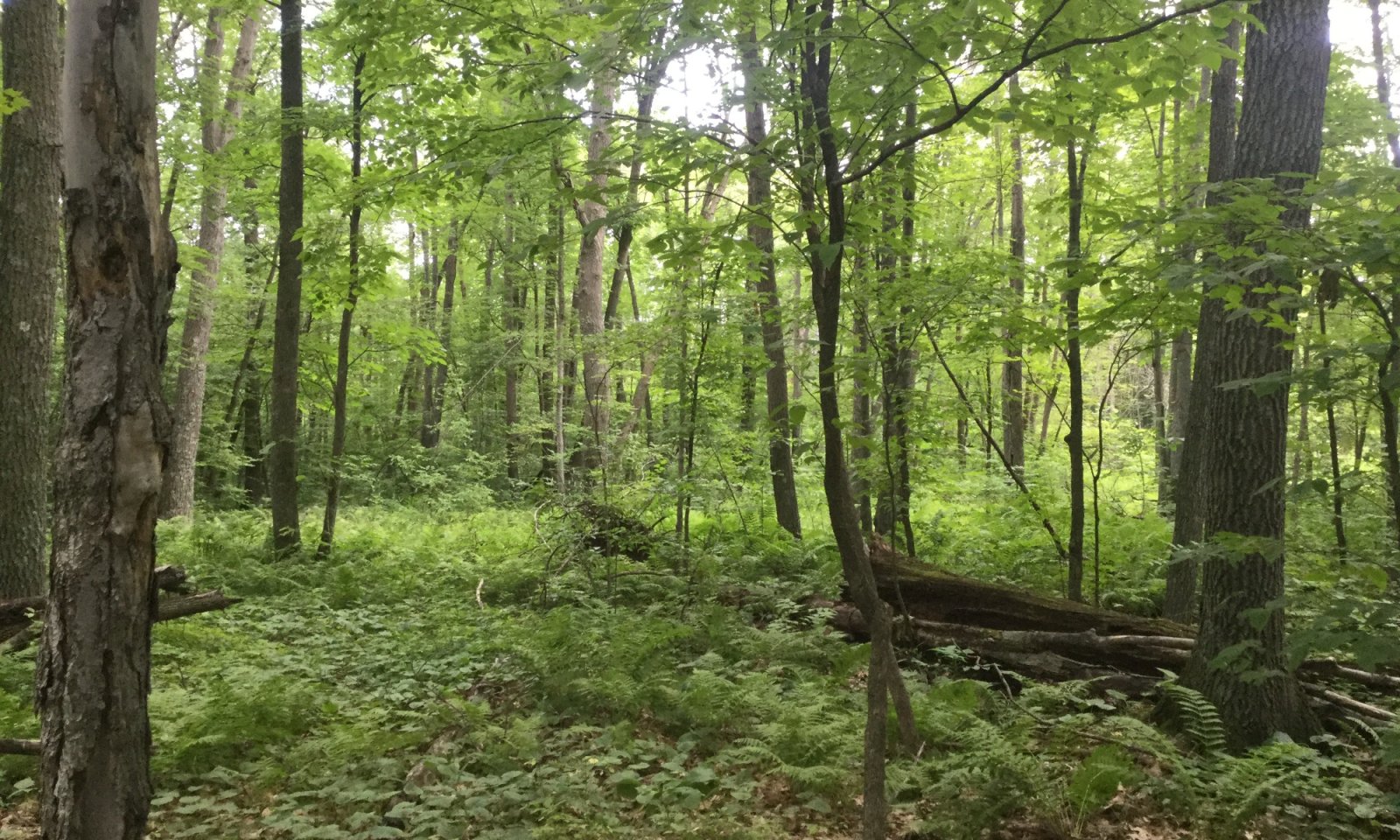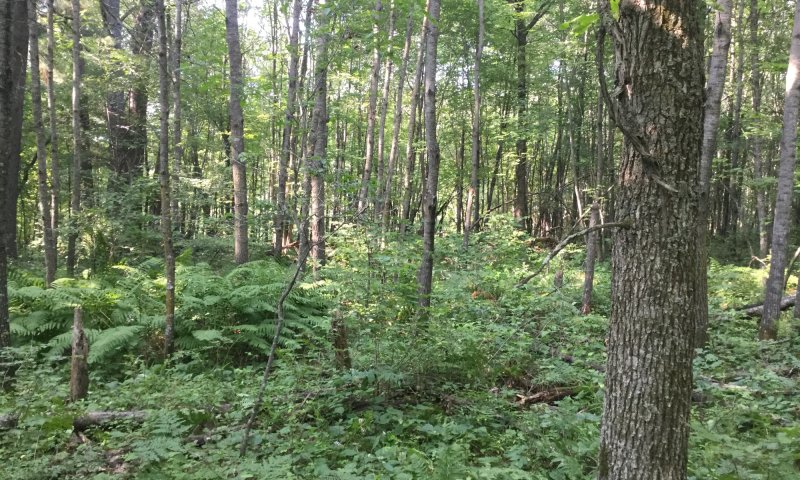

Natural Resources
Conservation Service
Ecological site F091XY008WI
Moist Clayey Lowland
Last updated: 9/27/2023
Accessed: 12/17/2025
General information
Provisional. A provisional ecological site description has undergone quality control and quality assurance review. It contains a working state and transition model and enough information to identify the ecological site.
MLRA notes
Major Land Resource Area (MLRA): 091X–Wisconsin and Minnesota Sandy Outwash
The Wisconsin and Minnesota Sandy Outwash MLRA is the most extensive glacial outwash system in the northern half of Wisconsin. The total land area of the Wisconsin portion is just under 1.4 million acres (2,170 sq miles). The northern half is a former spillway for Glacial Lake Duluth. The flowing meltwater from the draining lake has left behind thick deposits of drift and carved a terraced river valley now occupied by the St. Croix and Bois Brule Rivers.
The northeastern section – the Bayfield hills – is a collapsed outwash plain where drift deposits are thick. Lacustrine materials from Glacial Lake Duluth line the northeastern tip. Moving southwest, the landscape transitions into a large pitted outwash plain. This is an area of extensive kettle holes, and, where the underlying till is less permeable, kettle lakes with some interspersed morainic hills and ridges. The glacial drift deposits are thinner in the southwestern section, although there is still no documented surface bedrock within this MLRA.
The St. Croix and Bois Brule rivers share a channel that lines much of the northwestern border of this MLRA. In some places, the underlying reddish-brown sandy loam till of the Copper Falls Formation is exposed along cut riverbanks, though most of it is covered by a mantle of outwash. Glacial lakes deposited pockets of fine-textured lacustrine materials, most of which were washed away or buried by glacial outwash and meltwater flowing through the channel. East of the channel, some of the silty and clayey lakebed deposits are found near the surface, where they impede drainage and contribute to the formation of extensive wetlands.
Historically, the area supported extensive jack pine (Pinus banksiana), scrub, and oak forests and barrens. The northern portion also supported stands of red pine (Pinus resinosa) and eastern white pine (Pinus strobus) as well. Marsh and sedge meadow, wet prairies, and lowland shrubs dominated the extensive wetland complexes in the southern tip of this MLRA (Finley, R., 1976).
Classification relationships
Relationship to Established Framework and Classification Systems:
Biophysical Settings (Landfire, 2014): This ES is largely mapped as Laurentian-Acadian Northern Hardwoods Forest and Eastern Cool Temperate Pasture and Hayland
Habitat Types of N. Wisconsin (Kotar, 2002): The sites of this ES keyed out to two habitat types: Acer rubrum/Vaccinium-Rubus pubescens (ArVRp); Acer saccharum/Athyrium (AAt)
WDNR Natural Communities (WDNR, 2015):
Hierarchical Framework Relationships:
Major Land Resource Area (MLRA): Wisconsin and Minnesota Sandy Outwash (91X)
USFS Subregions: Bayfield Sand Plains (212Ka)
Wisconsin DNR Ecological Landscapes: Northwest Sands
Ecological site concept
The Moist Clayey Lowland ecological site is found in the southern portion of MLRA 91X on outwash plains, lake plains, and ground moraines. These sites are characterized by very deep, somewhat poorly drained soils formed primarily in clayey lacustrine deposits. Sites have a sandy or loamy mantle on top of the clayey lacustrine deposits. Precipitation, runoff from adjacent uplands, and groundwater discharge are the primary sources of water. Soils range from strongly acid to slightly alkaline.
The parent materials of Moist Clayey Lowland sites were deposited by old glacial lakes, including Glacial Lake Grantsburg. Rushing meltwater from large, proglacial streams during and after Wisconsin’s more recent glaciation – including one that occupied today’s St. Croix River valley – eroded or capped most of the silty and clayey lacustrine materials from the glacial lakes. Moist Clayey Lowland sites are found in locations far enough from the river valleys of these old proglacial streams to have not been washed away or thickly-capped.
Moist Clayey Lowland sites have finer textures than Moist Sandy and Loamy Lowland sites. The finer texture often supports higher pH and available water capacity than sandy and loamy materials. The somewhat poor drainage differs this ecological site from other clayey sites.
Associated sites
| F091XY006WI |
Wet Clayey Lowland These sites occur on depressions and drainageways on lake plains and outwash plains. They primarily form in clayey lacustrine deposits are subject to occasional ponding. Soils are very deep and poorly or very poorly drained. They are saturated for much of the year. They are wetter and occur lower on the drainage sequence than Moist Clayey Lowland sites. |
|---|---|
| F091XY011WI |
Sandy Upland These soils formed primarily in sandy outwash or sandy eolian deposits, but some sites formed in sandy lacustrine or loamy alluvium underlain by sandy outwash. Soils are very deep and are moderately well or somewhat excessively drained. They are neutral to extremely acid and lack a spodic horizon. They are drier and occur higher on the drainage sequence than Moist Sandy and Loamy Lowland sites. |
| F091XY012WI |
Loamy Upland These soils formed in loamy lacustrine, loamy alluvium, loamy till, sandy outwash, sandy eolian, or loess deposits. Some sites have underlying lacustrine deposits, till, or basalt bedrock. They are moderately well or well drained. They are drier and occur higher on the drainage sequence than Moist Sandy and Loamy Lowland sites, |
| F091XY015WI |
Dry Upland These sites formed in sandy outwash or eolian deposits. Soils are very deep, excessively drained, and lack a spodic horizon. They are much drier and occur higher on the drainage sequence than Moist Sandy and Loamy Lowland sites. |
Similar sites
| F091XY007WI |
Moist Sandy and Loamy Lowland These soils formed in sandy outwash and loamy alluvium. Like Moist Clayey Lowland sites, soils are very deep and are somewhat poorly drained, but Moist Sandy and Loamy Lowland sites have coarser particle size classes. The vegetative communities found on Moist Sandy and Loamy Lowland sites have comparable tolerances to poorer drainage but have lower nutrient requirements than those found on Moist Clayey Lowland sites. |
|---|---|
| F091XY003WI |
Floodplain These sites occur in depressions and flats on floodplains. They form in sandy to silty alluvium and are somewhat poorly to very poorly drained. They are subject to flooding. Their vegetative communities may sometimes be similar to those found on Moist Sandy and Loamy Lowland sites. |
Table 1. Dominant plant species
| Tree |
(1) Pinus strobus |
|---|---|
| Shrub |
(1) Vaccinium |
| Herbaceous |
(1) Maianthemum canadense |
Click on box and path labels to scroll to the respective text.
Ecosystem states
| T1A | - | Stand replacing disturbance that includes fire. |
|---|---|---|
| T1B | - | Removal of forest cover and tilling for agricultural crop production. |
| R2 | - | Deciduous forest community is slowly invaded by Black ash and Sugar maple as seed source allows. |
| T2A | - | Removal of forest cover and tilling for agricultural crop production. |
State 1 submodel, plant communities
| 1.1A | - | Blow-downs and ice storms create canopy openings. |
|---|---|---|
| 1.2A | - | Disturbance-free period for 30+ years. |


